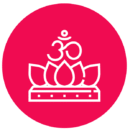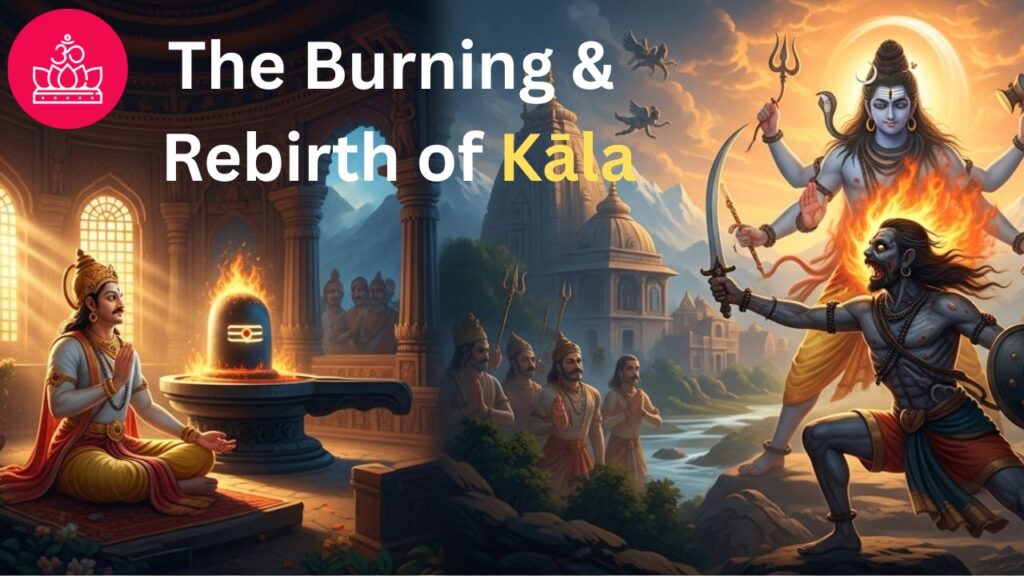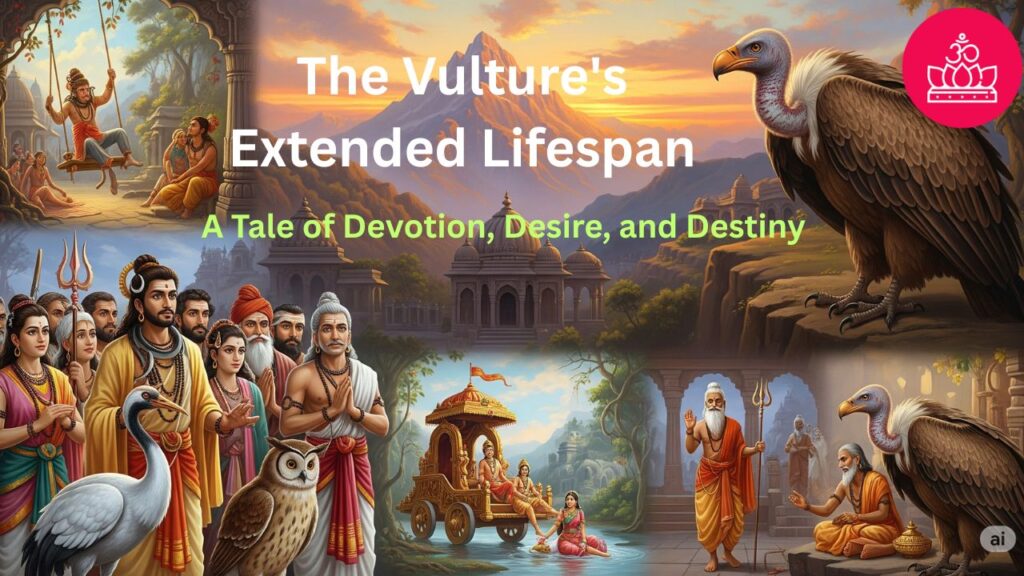The Birth of Kālikā and the Sixty-Four Kṣetrapālas: A Story of Divine Intervention and Protection
As told in: Skanda Purana – Kaumarika-khanda of the Maheshvara-khanda – Chapter 62: The Practice of Mahāvidyā
The Deva’s Plea and Kālikā’s Birth
Our narrative unfolds amidst a celestial crisis. The Devas, the gods inhabiting the heavens, found themselves under siege by the terrifying Daitya Dāruka, a demon of immense power. His malevolence was such that neither the Suras (gods) nor the Asuras (demons) could stand against him. Driven from their celestial abodes, the desperate Devas, in their utter helplessness, turned to the supreme deity, Shiva, and his consort, Parvati, for salvation. Their plea, filled with anguish and desperation, echoed through the heavens: “O Lord, we are harassed by the Daitya Dāruka, who cannot be subdued…Excepting Ardhanārīśvara (Lord of half-man-half-woman form) no one else can kill that vicious one…Be a refuge unto us who are being troubled by him.” Their cries of “Save us, save us!” painted a vivid picture of their plight.
Moved by their suffering, Shiva, the compassionate Hara, responded. Parvati, the divine mother, drawing upon the dark essence from Shiva’s throat—a potent symbol of his transformative power—created Kālikā, a fearsome goddess of immense might. This act itself highlights the dynamic interplay between Shiva and Parvati, showcasing their shared responsibility in maintaining cosmic order. Parvati imbued Kālikā with her own Shakti, the divine energy, empowering her to vanquish the demonic threat. “Since you are very black your name will be Kālikā,” Parvati declared, “O splendid lady, slay that wicked-minded enemy of Devas quickly.”
Kālikā, with a roar that shook the heavens, rose to the challenge. Her very voice proved lethal, instantly obliterating Dāruka and his followers. Their hearts split asunder, they perished. But Kālikā’s power, unleashed, was immense and uncontrolled. Stationed in the cremation ground of Avanti, her terrifying roars reverberated across the three worlds, leaving them maimed and desolate, as if plunged into a state of universal death. This powerful image serves as a reminder of the destructive potential of unchecked power, even when wielded for righteous purposes.
Rudra’s Intervention and the Creation of Kṣetrapālas
The universe hung precariously in the balance. To restore equilibrium, Rudra, another aspect of Shiva, assumed the form of a child. This act of divine humility is profound; the supreme being, to save the world, takes on the most vulnerable form. His cries, echoing in the cremation ground, reached Kālikā. Her heart softened by his innocence, she took the child to her bosom, suckling him. In this act of nurturing, the child, unbeknownst to Kālikā, subtly absorbed the intense, unbearable anger emanating from her body, anger born from the poison that once flowed from Shiva’s throat. This ingenious solution demonstrates the power of compassion and nurturing to neutralize even the most destructive forces.
Having achieved his purpose, the child, now ready to shed his guise, signaled a potential return to Kālikā’s destructive nature. The Devas, fearing another cataclysm, pleaded with him to remain in his child form. The child, demonstrating wisdom beyond his years, reassured them, stating that Kālikā was now pacified. To further alleviate their fears, he announced the creation of sixty-four Kṣetrapālas, protectors of sacred places. These Kṣetrapālas, born from his mouth, represent the multifaceted protection offered by the divine, a network ensuring the safety and sanctity of various realms.
The child-Rudra then assigned the Kṣetrapālas to their respective domains: twenty-five to the heavenly worlds, twenty-five to the netherworlds, and fourteen to the earthly realm. He appointed himself as the protector of the cremation ground, his vehicle a dog, a symbol of unwavering loyalty and devotion, even in the face of death. He established their ritualistic offerings: a mixture of Rajamasa (a type of pulse) and rice, emphasizing the importance of simple devotion. He further decreed that any ritual performed without prior worship of the Kṣetrapālas would be rendered fruitless, underscoring the significance of acknowledging and respecting the protective forces of the divine. With these instructions delivered, Lord Rudra vanished, leaving behind the newly established order. This act underlines the importance of divine guidance and the acceptance of duty for maintaining cosmic balance.
The Worship of Kṣetrapālas and Vaṭayakṣiṇī
The narrative then meticulously details the ritual for propitiating the Kṣetrapālas. A nine-syllabled mantra, “Om Kṣām obeisance to Kṣetrapāla,” forms the core of the ritual. The offering of sixty-four portions of rice and Rajamasa, sixty-four lamps, betel leaves, and areca nuts, along with a specific hymn, showcases the meticulous nature of Hindu ritual practice. The hymn itself vividly describes the Kṣetrapālas’ fearsome yet protective forms, further emphasizing the duality of their nature. The detailed listing of each Kṣetrapāla’s name and assigned location highlights the comprehensive nature of divine protection, extending to every corner of existence. Each detail emphasizes the importance of meticulous and respectful worship.
The story then introduces Vaṭayakṣiṇī, a divine being residing on a banyan tree. Her origin is traced to Sunanda, a Brahmin widow who, through rigorous penance and devotion, attained spiritual liberation and was subsequently reborn as Vaṭayakṣiṇī. This section underscores the transformative power of devotion and penance, emphasizing the path to spiritual elevation open to all, irrespective of social standing. The narrative highlights the importance of worshipping Vaṭayakṣiṇī alongside the other deities, further highlighting the interconnectedness of the divine.
The Aparājitā Vidyā: A Mantra of Unconquerable Power
The final section introduces the Aparājitā Vidyā, a powerful mantra dedicated to Vishnu. This mantra, a hymn of praise and supplication, invokes various aspects of Vishnu, showcasing his multifaceted nature as preserver and protector. It details a powerful invocation to vanquish all forms of evil, including demons, evil spirits, and negative energies. The mantra’s power extends beyond the spiritual realm, encompassing protection from natural calamities, societal threats, and even physical ailments. This section emphasizes the power of mantra recitation and the transformative effect of divine grace.
The mantra’s detailed description of Vishnu’s various avatars—from Vāsudeva to Dāmodara—emphasizes the omnipotence and all-encompassing nature of the deity. The numerous epithets used highlight his diverse attributes and his ability to overcome any obstacle. The instructions for the use of this mantra are equally comprehensive, extending its protection to both men and women, in various aspects of their lives.
The narrative concludes by stressing the efficacy of even a single reading of this mantra, emphasizing that even passive engagement with the divine can bring about positive change. The story concludes with a profound message: the power of devotion, the importance of respecting the divine protectors, and the efficacy of sacred mantras in overcoming adversity. The entire chapter serves as a testament to the intricate web of divine intervention and the unwavering protection offered to those who seek it with sincere devotion.



